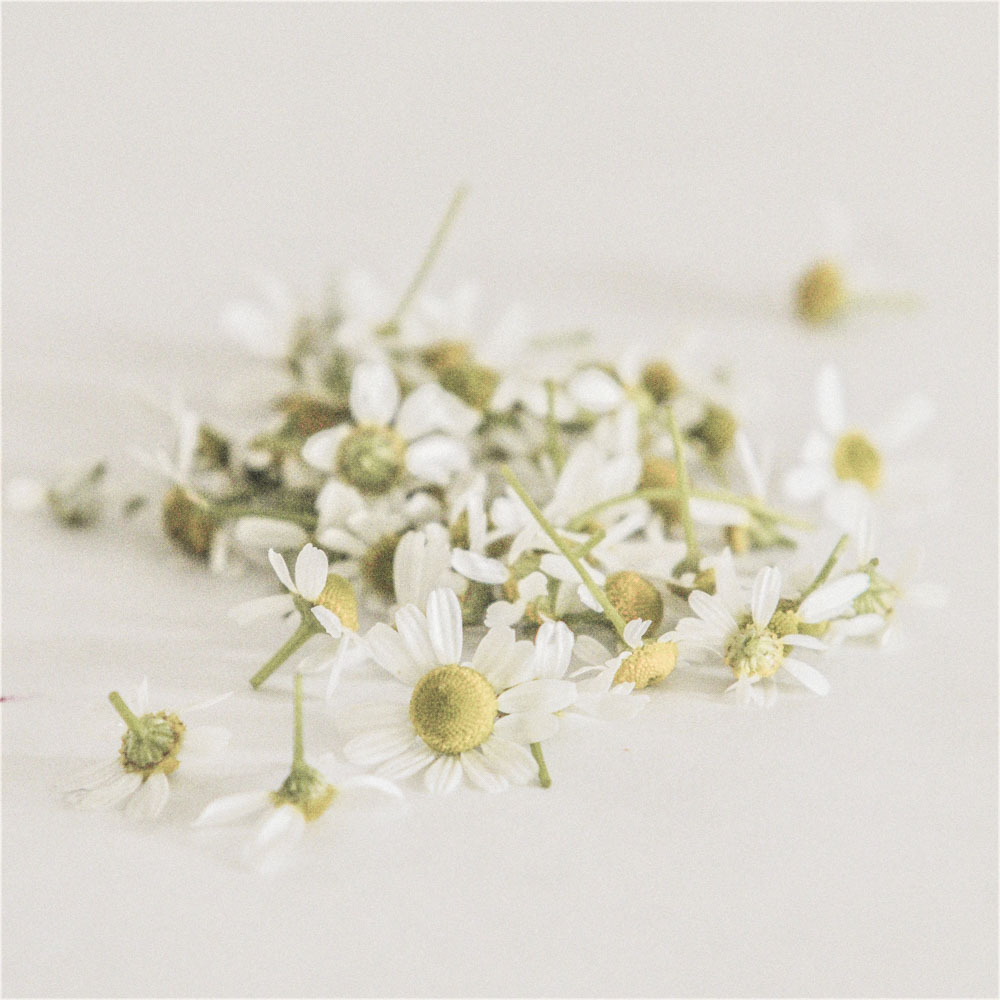Calendula
INCI: Calendula Officinalis Flower Extract

In this article, I will explain what Calendula is, its historical uses, the benefits of using Calendula in skincare, the nutrients it contains, and example use cases. By the end of this article, you will have a better understanding of how Calendula can benefit your skin and why it is an ingredient worth incorporating into your skincare routine.
Scroll down to read
What is Calendula?
Calendula is a plant that belongs to the daisy family. Its bright orange and yellow flowers have been used for centuries in traditional medicine to treat various ailments, including skin conditions. The plant is native to Europe, but it can now be found in many parts of the world. Calendula is also known as marigold or pot marigold, although it is different from the common garden marigold.
How Has Calendula Been Used in the Past?
Calendula has a long history of use in traditional medicine, dating back to ancient times. It was used by the ancient Egyptians to rejuvenate the skin, and the Greeks and Romans used it for its anti-inflammatory properties. In medieval Europe, Calendula was used to treat a range of skin conditions, from burns to eczema. Today, Calendula is still used in traditional medicine, and it is also a popular ingredient in natural skincare products.
Benefits of Calendula in Skincare
Calendula has numerous benefits when it comes to skincare. Here are five reasons why you should consider incorporating it into your routine:
1. Calming and Soothing
Calendula has anti-inflammatory properties that can help calm and soothe irritated skin. It can be especially beneficial for those with sensitive skin or conditions like rosacea and eczema. Calendula can also help reduce redness and swelling caused by acne.
2. Hydrating
Calendula is a natural humectant, which means it helps to retain moisture in the skin. This can be especially beneficial for those with dry or dehydrated skin. Calendula can also help improve skin elasticity and reduce the appearance of fine lines and wrinkles.
3. Antioxidant
Calendula is rich in antioxidants, which can help protect the skin from free radical damage. Free radicals are unstable molecules that can cause oxidative stress, leading to premature aging and other skin issues. Antioxidants help neutralize these free radicals, protecting the skin from damage.
4. Anti-bacterial
Calendula has natural antibacterial properties, which can help prevent acne and other skin infections. It can also be beneficial for those with oily skin, as it can help regulate oil production and reduce the appearance of pores.
5. Wound Healing
Calendula has been shown to promote wound healing and can be beneficial for those with minor cuts, burns, and other skin injuries. It can also help reduce the appearance of scars and promote overall skin health.
What Nutrients Does Calendula Contain?
Calendula is rich in compounds and nutrients that can benefit the skin. Some of the compounds and nutrients found in Calendula include:
1. Flavonoids
Flavonoids are a group of antioxidants found in many plants, including Calendula. These compounds help protect the skin from free radical damage and have anti-inflammatory properties.
2. Carotenoids
Carotenoids are pigments found in many fruits and vegetables, including Calendula. These compounds have antioxidant properties and can help protect the skin from UV damage.
3. Triterpenoids
Triterpenoids are a group of compounds found in many plants, including Calendula. These compounds have anti-inflammatory and wound-healing properties, making them beneficial for the skin.
4. Essential Oils
Calendula essential oil contains compounds like linalool and alpha-pinene, which have antibacterial and anti-inflammatory properties. These oils can help soothe irritated skin and promote healing.
Example Use Cases of Calendula in Skincare
Calendula can be used in a variety of skincare products, including cleansers, toners, moisturizers, and masks. Here are a few examples of how Calendula can be incorporated into your skincare routine:
1. Calendula Toner
A Calendula toner can help soothe and hydrate the skin while removing any leftover dirt or makeup. Simply soak a cotton pad with the toner and gently swipe it over your face and neck after cleansing.
2. Calendula Face Mask
A Calendula face mask can help reduce inflammation and promote healing. Mix together Calendula petals, honey, and yogurt to create a soothing mask. Apply the mask to your face and leave it on for 10-15 minutes before rinsing off with warm water.
3. Calendula Moisturizer
A Calendula moisturizer can help hydrate and protect the skin. Look for a moisturizer that contains Calendula extract or Calendula oil, and apply it to your face and neck after cleansing and toning.
Frequently Asked Questions
1. Is Calendula safe for all skin types?
Yes, Calendula is generally considered safe for all skin types. However, if you have sensitive skin, it is always a good idea to patch test any new products before applying them all over your face.
2. Can Calendula help with acne?
Yes, Calendula has natural antibacterial properties that can help prevent acne and other skin infections. It can also help reduce redness and swelling caused by acne.
3. Can Calendula help with anti-aging?
Yes, Calendula is rich in antioxidants, which can help protect the skin from free radical damage and prevent premature aging.
Recap
Calendula is a plant that has been used for centuries in traditional medicine to treat various ailments, including skin conditions. It has numerous benefits when it comes to skincare, including its calming and soothing properties, hydration, antioxidant properties, anti-bacterial properties, and wound-healing properties. Calendula contains compounds and nutrients like flavonoids, carotenoids, triterpenoids, and essential oils that can benefit the skin. It can be incorporated into a variety of skincare products, including toners, masks, and moisturizers. When using Calendula products, always patch test first if you have sensitive skin. Calendula can also help with acne prevention and anti-aging efforts.
In conclusion, Calendula is a versatile plant with many benefits for the skin. Its natural properties can help soothe, hydrate, protect, and heal the skin, making it a great addition to any skincare routine. Whether you choose to use Calendula-infused products or make your own DIY skincare recipes with Calendula petals, this plant can be a valuable tool for achieving healthy, glowing skin.
Further reading

Fireweed
If you're interested in learning about the benefits of using fireweed in your skincare routine, you're in the right place. Fireweed is a wild herbaceous plant that has been used for centuries by different cultures around the world. In this article, we'll explore the historical use of fireweed, its benefits for the skin, and how to incorporate it into your skincare routine.
Continue reading
Rosehip Seed Oil
Taking care of your skin is a priority, and finding the right products to include in your routine can be a challenge. That's why we're here to introduce you to a natural ingredient that has been gaining popularity in the skincare industry – rosehip seed oil. In this comprehensive guide, we will discuss everything you need to know about rosehip seed oil, including its benefits, nutrients, and how it can be used in skincare.
Continue reading
Chamomile
Are you on the hunt for a natural ingredient to enhance your skincare routine? Meet your new skincare bestie: chamomile! Chamomile has been used for centuries as a healing herb to treat many ailments, including skin conditions. In this guide, we’ll explore the benefits of chamomile in skincare, its nutrients, example use cases, side effects, and frequently asked questions.
Continue reading